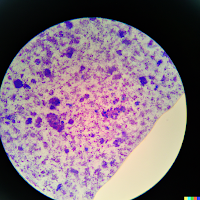Gram Staining
Gram Staining procedure- A process of defferentiate Gram positive and Gram negative Bacteria:
Gram staining procedure is a process of differentiation between gram positive and gram negative bacteria.
Pic: Gram Staining,Cell wall of both gram negative and gram positive bacteria are made with peptiodoglycan. The peptiodoglycan layer of gram positive bacteria is thicker than gram negative bacteria. As a result when stain with primary stain crystal violet gram positive bacteria can retain dye instead of gram negative bacteria ( gram negative bacteria cannot retain dye after wash with distilled water because its peptiodoglycan layer is thinner than gram positive Bacteria). But, when finally dyed with counter stain Safranin, both gram positive and gram negative bacteria retain stain. Gram positive bacteria show purple and gram negative bacteria show red or pink color after dying with counter stain Safranin.
Steps involves in gram staining:
- Primary staining with crystal violet to a heat-fixed smear bacteria colony on a glass slide.
-Use a sterilized steel loop for preparing slide.
- Loop stick on media where suspected colony are grown.
-Then smear on glass slide.
- Use spirit lamb for heat smearing for only 20-25 second unless all bacteria are heat killed and get false negative or false positive result. - Addition of a mordant- Gram's Iodine solution.
-Solution contains Iodine and potassium Iodide dilute with distiiled water. - Rapid decolorization with alcohol, acetone, or a mixture of alcohol and acetone.
-Gently decolorizing with alcohol or acetone. - Counter staining with safranin.
-Finally add counter stain safranin and slide placed under microscope.



Comments
Post a Comment